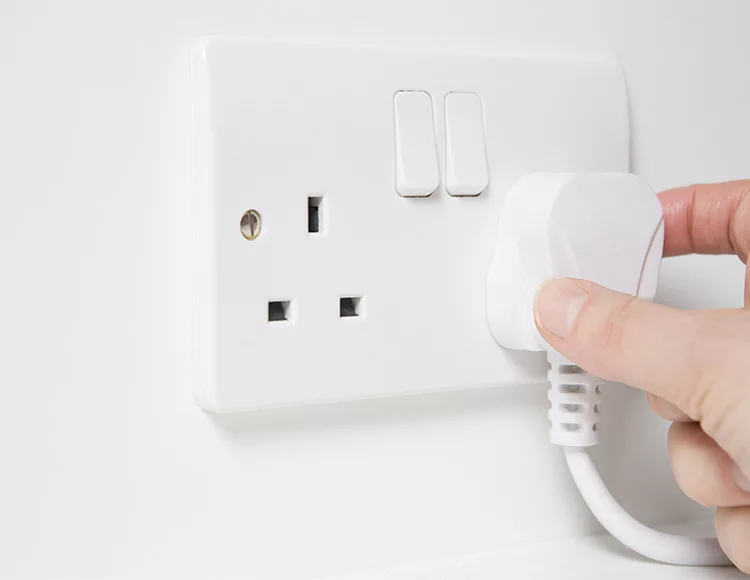EMS An energy management system, or EMS, is a collection...
Safety protection level of battery pack
Battery packs are widely used in modern devices, from mobile phones and laptops to electric vehicles and energy storage systems, and ensuring the safety of battery packs is a key issue. With the continuous development of battery technology, the safety protection level (IP level and other safety standards) of battery packs has become an important indicator to measure the safety performance of batteries under various environmental conditions. This paper will discuss the concept, classification and practical application of battery pack safety protection level.
definition
The safety protection class, usually starting with "IP" followed by two numbers, indicates the protection level of the equipment in terms of dust and water protection. The first number indicates the dustproof rating, which ranges from 0 to 6, and the second number indicates the waterproof rating, which ranges from 0 to 9. Higher numbers indicate higher protection.
The first number (dust protection level) :
0: No protection
1: Prevent solid objects with a diameter greater than 50mm from entering
2: Prevent tools or objects with a diameter greater than 12.5mm from entering
3: Prevent the entry of objects with a diameter greater than 2.5mm
4: Prevent the entry of objects with a diameter greater than 1mm
5: The entry of dust has a certain degree of protection
6: Completely dust-proof
Second number (waterproof rating) :
0: No protection
1: Prevent vertical falling water drops
2: Prevent water droplets within 15 degrees of tilt
3: Prevent water spraying
4: Prevent water splashing
5: Prevent water from flowing in
6: Prevent strong water flow
7: Anti-immersion
8: Prevent continuous immersion
9: High pressure water injection
For example, IP67 indicates that the battery pack is completely dust-proof and can be immersed in water up to 1 meter deep for 30 minutes.
The importance of battery pack safety protection level
The safety protection level of battery packs is very important to ensure their safety and reliability under different environmental conditions. This not only affects the normal operation of the device, but also is closely related to the safety of the user. Improving the protection level of battery packs can effectively prevent the following problems:
Short circuit and failure: Dustproof design prevents dust and debris from entering the battery pack, thereby reducing the risk of short circuit and failure.
Water damage: In humid environments or unexpected situations, the waterproof design of the battery pack prevents water infiltration and protects the internal components.
Safety accidents: The high protection level can reduce the safety accidents caused by the external environment, such as battery overheating, leakage or fire.
Other safety standards for battery packs
In addition to IP rating, battery pack security is also affected by other industry standards. For example:
UL certification: UL (Underwriters Laboratories) is a world-renowned safety certification body. Its testing of batteries includes overcharge, short circuit and thermal testing to ensure the safety of battery packs under extreme conditions.
UN 38.3: This is the UN safety standard for the transportation of lithium batteries, covering the safety testing of battery packs during transportation to ensure that no safety accidents occur during transportation.
IEC 62133: This is a battery safety standard developed by the International Electrotechnical Commission that provides guidance on the safety performance of rechargeable batteries.
Considerations when choosing a battery pack
When choosing a battery pack, you should consider the following points to ensure that it is suitable for a specific application and environment:
Environmental conditions: Evaluate the environmental conditions of the device operation, including dust, humidity and temperature, such as when used in outdoor or humid environments, a battery pack with a high IP rating should be selected.
Type of application: Different applications have different safety requirements for battery packs, such as electric vehicles requiring higher safety standards, while household devices may require relatively low protection levels.
Certification Standards: Check to see if the battery pack meets relevant safety certifications and standards to ensure its safety for a specific use.
Conclusion
The safety protection level of battery pack is an important indicator to ensure its safe use in various environments. Understanding and selecting the appropriate protection level can effectively reduce the safety risk and prolong the service life of the battery. In the increasing application scenarios of batteries, both manufacturers and users need to pay attention to the protection level of battery packs and related safety standards to achieve safe and reliable operation. With proper design and management, the safety and performance of battery packs can be fully guaranteed, thus providing solid support for the sustainable development of the industry.

Home energy storage product series
A lithium battery pack for home energy storage systems, which is compatible with solar panels and the sun The inverter can work together with the power grid to power household appliances, and it can also be used as a For off grid systems.
Extended reading
The function of the battery pack safety valve
The function of the battery pack safety valve With the...
THE ESSC Brand promise
Global supply
Our products sell well all over the world, covering many countries and regions, through the global logistics network, to provide customers with convenient purchasing experience.
Rigorous quality
We adhere to the highest quality control standards to ensure every product meets industry regulations and customer expectations, earning trust through consistent excellence.
Excellent service
With a customer-centric approach, we provide prompt responses, professional support, and personalized services, aiming to deliver the best user experience and long-term value.


